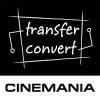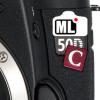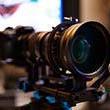-
Posts
782 -
Joined
-
Last visited
Reputation Activity
-
 Tito Ferradans reacted to Zmu in Iscorama 54 filteroption
Tito Ferradans reacted to Zmu in Iscorama 54 filteroption
If you're after close up filters add '95mm Focar A' & '95mm Focar B' to your list of Ebay saved searches - these are vintage Voigtlander +1 & +2 diopters. I believe they were made to suit an early Voigt zoom lens and are quality plus.
I say this because I just picked up a mint 95mm Focar B for $50!
-
 Tito Ferradans got a reaction from NAL in The Diopter Thread.
Tito Ferradans got a reaction from NAL in The Diopter Thread.
In the end, we never stop talking about these suckers across multiple threads, so I'm gonna try to compile as much information as I can into this one.
As in most cases, diopters are cheaper than anamorphics, I ended up with a lot of them, from multiple brands and multiple performances. The key was never go where everyone else is trying to find. Got the classics too, but that was luck.
Anyway, let's go to the undeniable favorite: Tokina +0.4 Achromatic diopter. My only complain about it is: why aren't you bigger?! My first lens was the LA7200 and I took quite a while to find the 105mm.
The next lenses all had different thread sizes. I could filter the Hypergonar on 77mm or 86mm, the Kowa with 72mm, Sankor 72mm too, Isco 54 at 95mm or 86mm and had a plan of an alternative 86mm front for the Lomo Squarefront, which didn't go through. Anyway, if I started to look for all these sizes of diopters, I'd go broke.
My salvation were the Series 9 filters. If someone isn't familiar with these, they come as unthreaded glass, that you put into an adapter that can range between 67mm and 86mm. That pretty much covers all lenses. I got adapters for 72, 77 and 86. The glass itself has around 83mm diameter.
Tiffen Series 9 filters are not in production anymore, so you can pick them off cheap ($1-10), even though they're not so common. The adapters are a bit harder to find.
After that, I went crazy on other brands as they showed up with decent sizes. Got 77mm Spiratones +0.5 and +0.25 for $6, 86mm +0.6 Fujinon, 72mm +1.25 Fujinon, 95mm +0.25 Pentax (for the 135-600mm Pentax Zoom), 82mm +0.75 Canon (1300H), etc, all very cheap. Some of them are real heavy, and I don't know if they're achromatics or single elements.
The advantage of the bigger ones is, less vignetting, even when you go wide, and, the sharpness is increased, since you don't get corner areas.
Finally, I found a couple 4.5" ones (around 114mm), that require special adapters, like Series 9. These adapters are impossible to find! I'm making a couple myself, as I trust threads more than tape. :P
EDIT Dec 07, 2014
Why Look for Low Powered Diopters
There's a common question going around, of WHY fraction diopters are better than full numbers, so I'm addressing that here too. Rich has a good explanation too >here.
As you can see below in the math section, the numbers correspond to certain maximum and minimum focus distances. When it comes to anamorphic lenses, what is the most common minimum focus distance? Something between 1.5m and 2m (or 5 to 7 feet, imperial scale).
Iscoramas have 2m minimum focus. Kowas, Sankors and most dual focus projector lenses are set to 1.5m minimum focus. For most shots, this distance is greater than the distance you want to put between the camera and your subject, which leads to being unable to focus properly - also, it's a pretty messed up distance for working indoors.
What a +0.4 or +0.5 diopter does is turn this "near 2m minimum focus distance" into "near 2m MAXIMUM focus distance" (see math below, seriously), allowing you to frame and shoot freely indoors and much closer to your subjects. If you want extreme close ups, then you need to have stronger diopters, but a +0.5 is a key tool for "standard" shots.
Achromats are also better, but they have their own explanation below too.
Focus and Anamorphic Compression
Another thing that relates directly to diopters is the lens compression. Most of our 1.5x or 2x stretch lenses only have that proportion when focused to infinity. Things change when you twist the focus ring. As you get closer to minimum focus, the less compression you have. 2x lenses tend to go towards 1.7x or 1.8x, Iscoramas get very close to 1.3x.
When unsqueezing your footage, this compression disparity can make shots look different from the rest of the footage, as if it was shot with a different lens. In a technical level, it really was a different optical path.
Using diopters you get rid of using the shorter distances on your focus ring and keep your compression constant throughout the shots.
DISCLAIMER: I don't know how this relates to baby anamorphics, and this CERTAINLY does not affect focus through lenses since you don't change the distance between the anamorphic elements.
//EDIT.
Strength measuring:
Fujinon: The first number is their maximum focus distance, the second number is the thread size. For example, a 16086 reaches 160cm at infinity (+0.6) and has 86mm thread. 190101, 190cm at infinity focus, 101mm thread.
Canon: The newest series (250D and 500D) measures in millimeters their maximum distance. 250mm equals +4 and 500mm equals +2. The "D" stands for Double element. The older ones use the same measuring, 1300H = 1300mm, +0.75. There's also a 900H, 105mm, which is a like +1.1.
When nothing is marked on it, good luck with testing the thing. It's usually not hard, but most of them have information lying around the web.
Thread size:
As well as regular threads, some are marked with a C after the number (mostly 86C, 95C and 105C), that means the thread on this filter is coarse, 1mm pitch. Our regular (fine) threads have .75mm pitch. There are adapters for these too, like the one below, from 86mm fine to 86C.
http://www.ebay.com/itm/350325079425
Minimum and Maximum focus distance:
Just realized that I haven't explained the math relating diopter strength and maximum focus range! Since most anamorphics perform better when focused closer to infinity, a diopter gives great help in "faking" it optically. A close up filter "sets" infinity just a couple meters/feet away, so anything BEYOND that certain point will be IMPOSSIBLE to focus.
Of course, this will NOT follow the lens' focus marks. Infinity on the lens now equals the diopter maximum focus distance.
Now, the numbers:
S = diopter strength (+0.5, +0.6, +1, +2, etc)
MaxFm = maximum focus distânce, measured here in METERS
MaxFm = 1 / (S)
Ha! I bet you expected something waaaay more complex, right? Some examples are never bad, so let's get to it. I'll use +0.5, +1.25 and +2 as sample strengths.
MaxFm = 1/(0.5) = 1/(1/2) = 1 x 2/1 = 2 meters
MaxFm = 1/(1.25) = 1/(5/4) = 1 x 4/5 = 0.8 meters
MaxFm = 1/(2) = 1/2 = 0.5 meters
If you live in a country where imperial scale prevails over the metric system, you just gotta do a quick fix to the expression.
S = diopter strength (+0.5, +0.6, +1, +2, etc)
MaxFf = maximum focus distânce, measured here in FEET
MaxFf = (3.3 / S)
Same examples from above, now in feet
MaxFf = 3.3/(0.5) = 1/(1/2) = 3.3 x 2/1 = 6.6 feet
MaxFf = 3.3/(1.25) = 1/(5/4) = 3.3 x 4/5 = 2.6 feet
MaxFf = 3.3/(2) = 3.3/2 = 1.6 feet
Regarding minimum focus distance, I'd say anything closer than half maximum focus distance is gonna look pretty bad already. With high power close ups (+2 and up), I'd say anything closer than 3/4 of your maximum focus distance is gonna be pretty bad already.
Of course, this "minimum focus distance" image quality has A LOT of influence from the anamorphic. Also, achromatic diopters will improve almost everything you could imagine.
Since I've just mentioned them, here's a list of achromatic diopters, with their strength, manufacturer, price range, etc.
http://fuzzcraft.com/achromats.html
Price range:
Just for checking, here is a list of the most common lenses and their outgoing price.
Tokina +0.5 72mm - $150
Kenko +0.5 72mm - $90
Tokina +0.4 72mm Achromatic - $350
Kenko +0.3 105mm - $350
Canon +2 72mm Achromatic - $100
Sigma +1.6 62mm Achromatic - $20
Angenieux +0.25 82mm - $330
Kinoptik +1 82mm Achromatic - $530
Foton-A +1 or +1.25 - $900 (GONE!)
Tiffen +0.5 to +2 138mm - $50 and up
Tiffen +0.5 to +5 Series 9 - $1-50
Tiffen/Kodak Series 9 Adapters - $20-40
Tiffen +0.5 to +2 4.5" - $10-50 (RARE)
-
 Tito Ferradans got a reaction from JohnBarlow in Anamorphic Lens-yclopedia.
Tito Ferradans got a reaction from JohnBarlow in Anamorphic Lens-yclopedia.
There's definitely something wrong with your account JohnBarlow! I just tried to send you a message and there is no such option available!
Anyway, if you can go to the folder containing the files (link below), feel free to create copies of any file and modify it according to the lenses you know/have available. Can you do that? If you can't find your way around google docs, just list here the ones you can write about, and I'll create their files for you. :)
https://drive.google.com/#folders/0BzVcUB-5ReiZajVncE9rYU9heDQ
From yesterday to now, I've added about 15 lenses, as detailed as I could. In the list view, all the files that have stars beside their name are complete. In the preview, the ones with pictures are complete.
There are MANY lenses that don't have their files yet, but it's growing fast, I think. Please, ask other anamorphic shooters to collaborate. :P
-
 Tito Ferradans reacted to QuickHitRecord in Anamorphic Lens-yclopedia.
Tito Ferradans reacted to QuickHitRecord in Anamorphic Lens-yclopedia.
It struck me while I was writing about the Iscomorphot 8/2x that perhaps there is a better way to do this. If you have ever been to over to Personal-View, each piece of gear has its own thread and the initial post includes info, photos, and video clips. If someone creates a duplicate topic, Vitaliy redirects people and closes it.
I think that what we need here is a sub-forum, similar to the way that 'GH2 Hack' is right now (maybe we can call the 'Anamorphic Directory' or something like that), and a dedicated moderator who can make sure that every known anamorphic lens has its own thread. Then forum members could update it with their own findings. It's all easily searchable, and it becomes a living, self-perpetuating database of anamorphic knowledge.
-
 Tito Ferradans reacted to andy lee in Wide Angle converter in front of Anamorphic?
Tito Ferradans reacted to andy lee in Wide Angle converter in front of Anamorphic?
is this wide enough and sharp enough for you?? haha!
http://www.eoshd.com/comments/gallery/image/493-olympus-x08-wide-adaptor-isco-anamorphic-lens-fuji-55mm-taking-lens-nd4-filter/
-
 Tito Ferradans got a reaction from Julian in Wide Angle converter in front of Anamorphic?
Tito Ferradans got a reaction from Julian in Wide Angle converter in front of Anamorphic?
I remember reading in a thread on DVXuser some time back about a guy using a 72mm threaded 0.7x adapter (by Century Optics) in front of his Isco-36 and getting great results. I couldn't find it again, but will keep looking.
-
 Tito Ferradans reacted to AOvisuals in Real projects shot with anamorphic setups?
Tito Ferradans reacted to AOvisuals in Real projects shot with anamorphic setups?
Okay, when I started working on this film I new I wanted to shoot anamorphic but I was entirely not acquainted with doing so. I found a place to rent an ISCO from for a pretty decent rate and just jumped in. There was enough time before shooting was set to start that I could do a very decent number of tests to get comfortable with the system.
At first I was not sure which camera we were going to be going with so I tested a few. This was the first video test we did. It was the ISCO with a ISCO 35mm mounted on the 5D MKII with a Small HD DP4 on top. I just put the entire thing on a pistol grip and went out into a field and shot handheld. I knew after this test this was going to be a blast. I had no plan on what we were shooting that day, the lens had literally just arrived and we rushed out to catch the sunset at golden hour. I wanted to get some idea of how it looked so i could start making decisions.
https://vimeo.com/49436068
Then after that test I got access to a FS100 and decided I'd give it a go with that but had not really tested anything with it, or seen anything. Then I stubbled across this video:
https://vimeo.com/28203770
and knew that I had to shoot with the FS100. And following that decision we shot this simple test video. The only lit segments are in the kitchen. Which have a 575 HMI through a silk coming in from a side window. Flashlights and such were placed intentionally to test the flare intensity.
http://vimeo.com/49528017
After I made this decision, but before shooting on the film "seek" started I was commissioned to shoot an action adventure in the style of the goonies. We were planning on using the FS100 with the ISCO and shooting was going to happen over the course of 4 weeks. Sadly this project was cancelled, but I brought the FS100 along with me for initial location scouting. These shots were done for the sake of feeling out the space and I did them as quickly as possible. This was thrown together for the director to get a sense of what choices we had open to us. Watching this still pains me I did not get a chance to shoot this film. The FS100 would have been a spectacular fit for it too. (and would have been super convienent since I already had the FS100 for a long term rental)
https://vimeo.com/52070462
Working with this setup was a fantastic experience. It was not without its difficulties as getting used to using diopters and an achromat was quite the learning curve. It came with +1,+2,+4,+10 diopters. This thing could get amazingly sharp macro focus shots. This mantis was only the size of a dime, and here it fills the entire frame. Crazy.
Let me know if anyone wants anymore details.
-
 Tito Ferradans reacted to Julian in The Diopter Thread.
Tito Ferradans reacted to Julian in The Diopter Thread.
Haha no worries,! Love this topic and the anamorphic eBay topic btw, keep up the good work!
I got this one in today. It is definitely more than +1. With my Iscomorphot 8/2x it lets me focus from around half a meter.
Oh well, I can do anamorphic close ups now :) Not bad!
-
 Tito Ferradans got a reaction from Darby Costello in [Closed] Current e-bay auctions for anamorphic adapters
Tito Ferradans got a reaction from Darby Costello in [Closed] Current e-bay auctions for anamorphic adapters
Got curious about using a green lens!
http://www.ebay.com/itm/261212368111
-
 Tito Ferradans reacted to QuickHitRecord in Anamorphic Lens-yclopedia.
Tito Ferradans reacted to QuickHitRecord in Anamorphic Lens-yclopedia.
I haven't authored one in a while, but I think that you used to be able to make a Google Docs spreadsheet editable to anyone with an email address. Also, I think that it saves versions of itself in case we get some spherical lens fanboy who tries to delete it or SPAM it.
-
 Tito Ferradans got a reaction from nahua in Magic Lantern - RAW and Anamorphic
Tito Ferradans got a reaction from nahua in Magic Lantern - RAW and Anamorphic
It becomes EVEN MORE easily scalable since each frame has 240DPI resolution, while a regular RGB frame has only 72DPI. With this "extra" resolution, you can increase the image size without considerable loss of quality. :P
As soon as I get this compiler working again, I'll write a RAW module with anamorphic options for both 1280 and 720 height, and various lenses (2x, 1.5x and 1.33x).
-
 Tito Ferradans reacted to Paulio in Anamorphic Lens-yclopedia.
Tito Ferradans reacted to Paulio in Anamorphic Lens-yclopedia.
It would be awesome if some of this could be included in the next update to the EOSHD anamorphic guide, at least for then more popular/common lenses.
-
 Tito Ferradans reacted to Julian in Magic Lantern - RAW and Anamorphic
Tito Ferradans reacted to Julian in Magic Lantern - RAW and Anamorphic
Andrews test video is in 1920x1280 (3:2), so 1707x1280 (4:3) would be nice! That would make 3414x1280 with a 2x stretch. Pretty sure it will scale up nicely to 4K.
-
 Tito Ferradans reacted to Germy1979 in BIG NEWS - Hands on with CONTINUOUS raw recording on Canon 5D Mark III
Tito Ferradans reacted to Germy1979 in BIG NEWS - Hands on with CONTINUOUS raw recording on Canon 5D Mark III
Lmao. I wonder what the might of their legal team thinks of this one.
"Alright assholes. We'll leave your 1DX alone."
-
 Tito Ferradans reacted to rishaar in BIG NEWS - Hands on with CONTINUOUS raw recording on Canon 5D Mark III
Tito Ferradans reacted to rishaar in BIG NEWS - Hands on with CONTINUOUS raw recording on Canon 5D Mark III
Somebody has to say it, so i'll go first.
2012: BMCC (Black Magic Cinema camera)
2013: MLCC (Magic Lantern Cracked camera)
-
 Tito Ferradans reacted to JohnBarlow in Magic Lantern - RAW and Anamorphic
Tito Ferradans reacted to JohnBarlow in Magic Lantern - RAW and Anamorphic
This is awesome news for anyone about to release Full Frame friendly 2x anamorphics to the world :P
I feel quite delirious LOL
-
 Tito Ferradans reacted to brucker in Anamorphic Lens-yclopedia.
Tito Ferradans reacted to brucker in Anamorphic Lens-yclopedia.
i propose we kidnap tony wilson and hold him captive for as long as it takes to extract all relevant information.
and the irrelevant info too,.. dude has some great stories :D
-
 Tito Ferradans reacted to QuickHitRecord in Anamorphic Lens-yclopedia.
Tito Ferradans reacted to QuickHitRecord in Anamorphic Lens-yclopedia.
Maybe it could be a spreadsheet on Google Docs. That way, anyone could contribute to it.
-
 Tito Ferradans reacted to Julian in The Diopter Thread.
Tito Ferradans reacted to Julian in The Diopter Thread.
Just bought a Leica Leitz Elpro VIIb for 30 euros. It's a +0,75 achromat, 54mm thread.. they don't come bigger, but probably useful on my baby anamorphics!
-
 Tito Ferradans reacted to JohnBarlow in The Diopter Thread.
Tito Ferradans reacted to JohnBarlow in The Diopter Thread.
Found this old list of achros
http://www.angelfire.com/ca/erker/closeups.html
-
 Tito Ferradans reacted to JohnBarlow in Anamorphic Lens-yclopedia.
Tito Ferradans reacted to JohnBarlow in Anamorphic Lens-yclopedia.
You passed on a few :
Benoist Berthiot Cinemascope 16m/m (Hypergonar) 6 various models (The best)
Hypergonar HI FI 1
Hypergonar C35 (Gorgeous George)
Carl Zeiss Jena and Rectoscop at Rathenow several models
Dyaliscope - several models - attachments and full lenses http://www.widescreenmuseum.com/widescreen/dyaliscope_lenses.pdf
plus some rare versions by Andre Fougrat
Ruralscope
SK Cinelux series
Totalvision
-
 Tito Ferradans reacted to Julian in The Diopter Thread.
Tito Ferradans reacted to Julian in The Diopter Thread.
I have two of those, bought one on marktplaats.nl for 10 euros :) Ordered 2 chinese UV filters for a few euro's, just going to break the glass and superglue the thread to the Tamron (it's not Sigma ;)) filters. This should work fine, I already put it on another 72mm filter (that I don't want to break) and it fits exactly.
Just got this one in. Tried it holding in front of my Iscomorphot 8/2x and it brings the focus down to something like 1,2 meters, have to measure it exactly. No vignetting with 50mm taking lens on Panasonic G6. Looking good!
Waiting for some step up/down rings to make a filter solution for the Iscomorphot.
-
 Tito Ferradans got a reaction from Gábor Ember in Anamorphic Lens-yclopedia.
Tito Ferradans got a reaction from Gábor Ember in Anamorphic Lens-yclopedia.
First, I'd like to apologize for the pun in the title, then, explain what's the catch, to see if anybody is interested.
THE greatest advantage of this forum is pretty obvious: everyone is willing to help and answer questions. But it gets kind of dull to answer the same thing numerous times over dozens of threads. Like "do I need rails for that?" "what lens should I buy?", "how can I mount this?", "is it heavy?", "what's the filter size for XYZ lens?" etc...
Based on what I read here, almost all frequent users had at least a couple different lenses and knows their advantages and quirks, as well as many important detail about them (which is very hard to find through google). I myself had about ten different anamorphics so far, and still look to test some more.
The main idea is to compile all of this data into a series of threads, named according to each lens, so everyone can have easy access to it. Then, use one main thread as index. All threads first/main posts will be constantly updated until every field is filled. (something like this chart - http://super8wiki.com/index.php/Anamorphic_Lenses - but with more useful information).
I'm thinking basic information, like:
LENS NAME
A couple photos of it (standardized size and resolution) and a link to a more comprehensive gallery.
Maker:
Weight: (in grams and pounds)
Front element size: glass only, in millimeters
Rear element size: glass only, in millimeters
Taking lens minimum focal length (based on Full Frame):
Stretch:
Focusing mode: single focus, dual focus, focus through, etc
Minimum focusing distance:
Mounting solution: Is there a specific clamp for it? Just using stepping rings will do the job? links to custom setups, etc...
Filter thread: size, or solution to create threads (front clamp, gluing rings...)
Pros: everything we can come up that is good about it, advantages when compared to other lenses. Like "don't need diopters", very lightweight, sharp edge to edge, flares nicely (this can also be seen as a con), etc...
Cons: well, pretty much the opposite of the things above! bad image quality on edges, chromatic aberration, requires tiny apertures, etc...
Tricks of the trade / Observations: anything specific regarding working with this particular lens, that wasn't mentioned properly in any of the above fields. Rehousing options (and prices), repairs, mods, etc...
Do you guys think there's something missing? I've decided to avoid fields like "score" or "price range", since they change dramatically from time to time, or user to user. Is this a good idea?
-
 Tito Ferradans reacted to andy lee in [Closed] Current e-bay auctions for anamorphic adapters
Tito Ferradans reacted to andy lee in [Closed] Current e-bay auctions for anamorphic adapters
too many !
-
 Tito Ferradans reacted to QuickHitRecord in [Closed] Current e-bay auctions for anamorphic adapters
Tito Ferradans reacted to QuickHitRecord in [Closed] Current e-bay auctions for anamorphic adapters
Thanks.
Based on what you are saying, it sounds like you may have a rack-focusable 2x anamorphic that costs around 1/40 of what an Iscorama goes for these days...
This sounds too good to be true. What's the catch?






